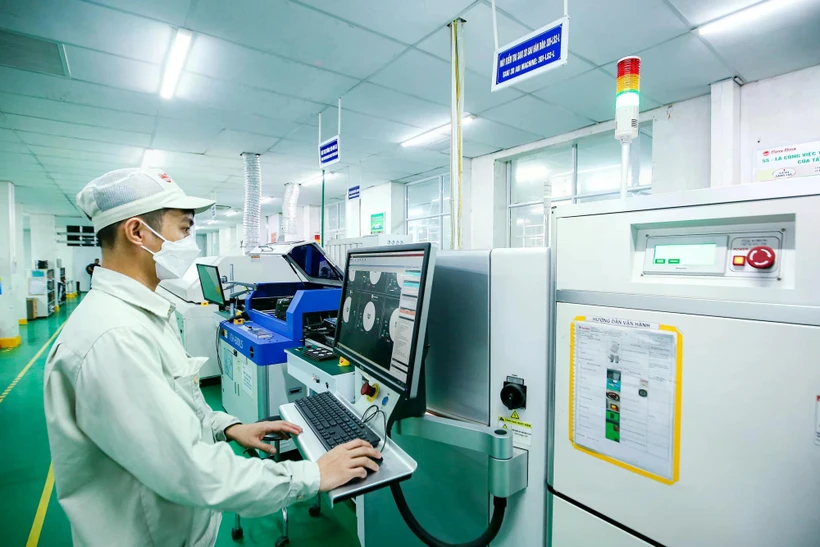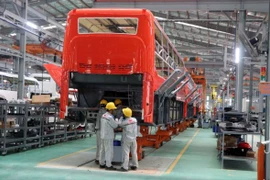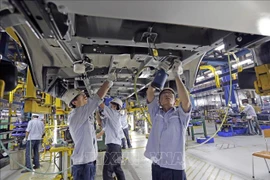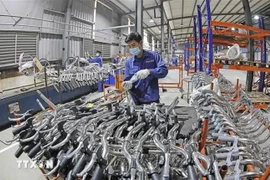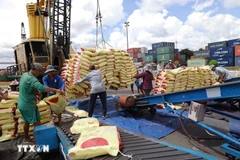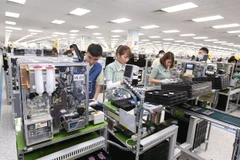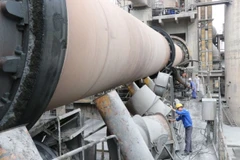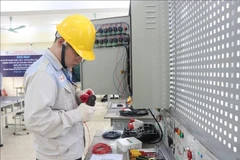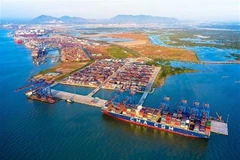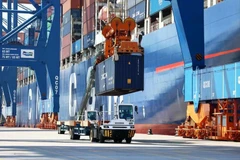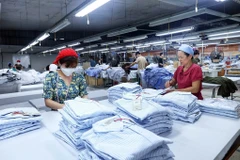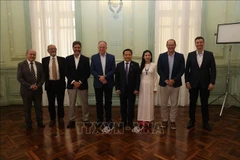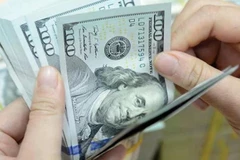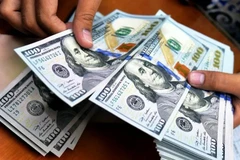Hanoi (VNA) - In the context of a volatile world economy, Vietnam has made efforts to maintain macroeconomic stability and successfully control inflation. The year 2024 saw a strong recovery in industrial production, playing an important role in the country's economic growth.
To better understand this picture, VietnamPlus conducted an interview with Ms. Phi Thi Huong Nga, Director of the Department of Industry and Construction Statistics under the General Statistics Office (GSO).
Flexible and efficient management
- Reporter: How does the General Statistics Office assess the industrial production results in 2024 in the context of many challenges in the world and the domestic economic situation?
Ms. Phi Thi Huong Nga: This year, 2024, was marked with volatility both domestically and internationally. The slow recovery of the global economy, fierce trade competition, and escalating geopolitical conflicts all created significant challenges for Vietnam. Domestically, although the goals of stabilising the macro economy, controlling inflation, and maintaining growth were top priorities, we still faced certain difficulties such as the impact of natural disasters.
However, overcoming these difficulties, Vietnam's industrial production in 2024 achieved very impressive results, with the highest growth rate in the past four years. The index of industrial production (IIP) for the whole year increased by 8.4% compared to the previous year, which is a truly encouraging figure.

- Reporter: More specifically, what are the key factors that have driven this remarkable growth?
Ms. Phi Thi Huong Nga: There were four main factors. The first was the flexible management of the Government. Specifically, timely policy responses removed difficulties for businesses, especially tax policies. Typically, Decree 109 on reducing 50% of registration tax for domestically produced and assembled cars created a big push, helping create strong growth in the motor vehicle manufacturing industry. Accordingly, the production index of this industry increased by 43.7% in the fourth quarter compared to the same period last year and increased by 21% for the whole year. This clearly showed the positive impact of the policy on the development of the automobile industry in particular and the economy in general.
Second, Government and Prime Ministerial support of investment promotion and trade connection activities provided a boost. Vietnam has taken advantage of international advantages (such as the shift in textile orders due to the conflict in Bangladesh) to create opportunities for Vietnamese enterprises to expand production and export. As a result, import and export turnover increased, and export-oriented industries all grew well. The textile, garment, leather and footwear industry increased by over 10%. Furniture manufacturing increased by 23.8%, and the electricity and electronics industry increased from 8.3% to 11.9%.
The third is the proactive participation of local authorities. In particular, localities, such as Bac Giang, Hai Phong, Quang Ninh, Bac Ninh, Nghe An, Ba Ria-Vung Tau, made efforts to reform administrative procedures, improve infrastructure quality, and took initiative in investment promotion. This created a favourable business environment, attracting businesses to invest and develop production.
Fourth is the low base comparison factor. In 2023, industrial growth was only 1.3% compared to the previous year, a very low growth rate. Therefore, 2024 had a significantly higher growth rate.
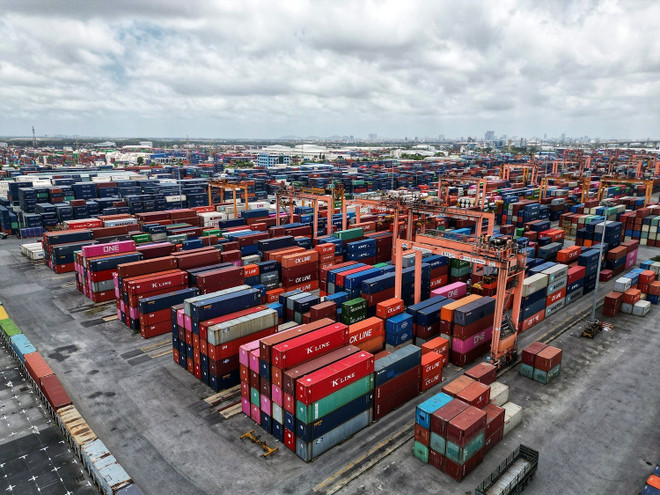
Breakthrough prospects
- Reporter: With the current developments in the world and domestic economy, what does the General Statistics Office think about the prospects of industrial production in 2025?
Ms. Phi Thi Huong Nga: The outlook for 2025 has both opportunities and challenges. Regarding the world situation, we need to face the risks that the International Monetary Fund (IMF) has warned about, including the impact of monetary policy, financial market risks, public debt stress, difficulties in the Chinese real estate market, commodity price fluctuations due to climate change, geopolitical conflicts and increasing trade protectionism. These risks can negatively impact a highly open economy like Vietnam.
Regarding the domestic situation, we have many positive factors with a stable macro-economy, controlled inflation, continued increase in foreign direct investment (FDI), and focus on public investment, especially in key national projects. In addition, the trend of shifting international supply chains brings great opportunities to Vietnam. If we make the most of this advantage while promoting digital transformation and green transition, meeting the increasingly stringent requirements of the international market, we can completely create a breakthrough in industrial growth in 2025 and the following years.

- Reporter: The business sector is assessed to have recovered but is still weak, as the rate of businesses withdrawing from the market is still increasing. Through the survey and research of the General Statistics Office, how do you think this sector needs to be supported in the coming time?
Ms. Phi Thi Huong Nga: It is true that there are many positive signs in the business sector but difficulties remain. The bright spot is that the number of businesses entering and re-entering the market is high and 1.2 times higher than the number of businesses withdrawing from the market. Of which, the number of businesses resuming operations reached a record high of over 70,000. Businesses are investing in expanding production, reflected in the additional registered capital reaching over 2 quadrillion billion VND, an increase of 3.6% compared to 2023.
However, some notable issues are that the number of newly-established enterprises decreased by 1.4% compared to 2023, the number of enterprises temporarily ceasing operations has exceeded 100,000. Enterprises faced the higher prices of imported raw materials, the development of e-commerce, and economic fluctuations. In this context, economically dynamic regions such as the Red River Delta, the Southeastern region and major cities, also saw a decrease in the number of newly established enterprises.
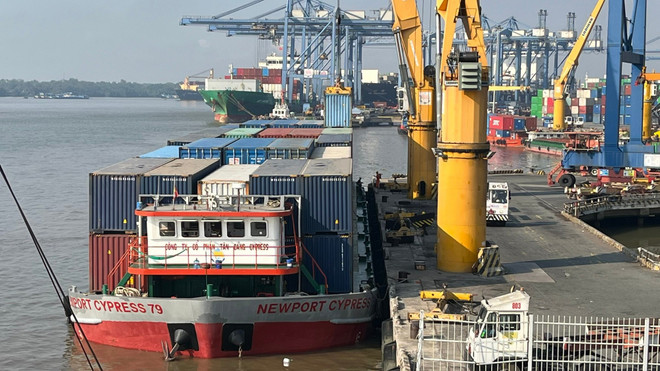
- Reporter: From the surveys of the General Statistics Office, what recommendations do businesses have for better support in the future?
Ms. Phi Thi Huong Nga: Through surveys by the General Statistics Office, especially the survey of manufacturing enterprises in the fourth quarter, we found a number of key recommendations.
The first is to reduce interest rates with 42% of enterprises recommending the State continue to cut lending rates to reduce input cost pressure and create conditions for enterprises to access capital for production and business if they need it. This is especially important for industries such as food processing (50.3%), wood processing (50.1%) and manufacturing of non-metallic mineral products (47.3%).
The second is stabilising raw material and energy prices. Specifically, 33.3% of enterprises recommend the State take measures to stabilise raw material and energy prices to secure enterprise production. Industries producing non-metallic mineral products (40.2%), food processing (37.3%) and manufacturing prefabricated metal products (35%) are particularly interested in this issue.
The third is administrative procedure reform. Up to now, 25.2% of enterprises have recommended administrative procedure reform, including cutting down on administrative procedure processing. This includes heavy industries such as manufacturing (32.4%), electrical equipment (31.5%) and electronic products, computers, and optics (30.7%).
The fourth highlight is the land lease policy. Many enterprises have proposed that the State have specific policies on land lease for production and business, limiting the increase in burden due to high land lease prices, especially for enterprises in the Southeastern region, such as Ho Chi Minh City (18.5%) and Dong Nai (24.1%). In addition, construction material manufacturing enterprises also hope that the Government and its ministries will have policies that stabilize the output market. In addition, construction enterprises want support in the procurement of raw materials, capital, public bidding information, reduction of administrative procedures and sanctions for investors who are slow in payment and settlement.
Reporter: Thank you for your interview!
